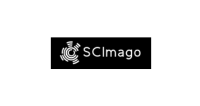ESCLERECTOMIA PROFUNDA COM IRIDECTOMIA PERIFÉRICA ASSOCIADA AO USO TÓPICO DE ÁCIDO SALICÍLICO EM GLAUCOMA EXPERIMENTAL EM GATOS
DOI:
https://doi.org/10.5380/avs.v7i2.3983Palavras-chave:
glaucoma, ácido salicílico, gato. Glaucoma, salicilic acid, catsResumo
O objetivo do presente trabalho foi o de testar em modelo experimental de glaucoma e em olhos sadios de gatos, duas técnicas cirúrgicas filtrantes associadas ao uso tópico no pós-operatório de Ácido Salicílico (AS). Este último é reconhecidamente um excelente antiprostaglandínico, além de ter ação queratolítica, podendo facilitar a patência da cirurgia filtrante. Inicialmente foi realizado um teste de toxicidade ocular do colírio de AS a 0,3%, em três gatos (três olhos). Na seqüência, estes animais foram submetidos a injeções de uma solução supersaturada de carbono na câmara anterior, resultando em glaucomas com pressão intra-ocular de 40 mmHg em apenas 48 horas. Em seguida foram realizadas as cirurgias filtrantes no grupo com glaucoma e em outro grupo de três, sem pressão intra-ocular elevada. No período pós-operatório, cinco gatos receberam instilações do colírio de AS, três vezes ao dia durante 7 dias e, uma vez ao dia até o 25 dia, e um gato permaneceu como controle. Este último, teve recidiva do glaucoma no sétimo dia do pósoperatório. Os cinco gatos que receberam a colírio de AS foram observados, quanto a patência da bolha de filtração, até o 25º dia, quando se observou em todos os animais filtração adequada. Conclui-se que o colírio de ácido salisílico possui uma boa ação antifibrótica e antiinflamatória, permitindo a patência de filtração no pós-operatório.
Deep sclerectomy with periferic iridectomy associated to the topical use of salicilic acid in experimental glaucoma in cats
Abstract
The main aim of the present research work is the testing of two techniques of filtrating surgery in order to get an experimental model of glaucoma in healthy cat eyes. This technique was associated with the topical use of 0.3% solution of salicilic acid (SA) due to its antiprostaglandin and antifibrotic properties, maintaining, this way, the filtrating surgery. Firstly, the three experimental cats underwent a toxic tolerance test. The glaucoma model was obtained by the injection of a supersaturated solution of carbon fiber in the eye anterior chamber. After a period of 48 hours, all the three animals developed a glaucoma displaying intraocular pressure above 40 mmHg. This group and another group of three cats with normal intraocular pressure were submitted to the same surgical and medical protocols. Five of this animals were medicated with topical drops of SA, the remainder one, used as control, developed glaucoma around the seventh day after the operation. The salicilic acid treated cats were observed for the maintenance of the filtrating bubble during 25 days, all of them displaying good aqueous filtration, an observations that allowed the conclusion that salicilic acid displays a marked antifibrotic and antiinflamatory activity towards the sclera, allowing the efficacy of the filtrating surgery.
Downloads
Como Citar
Edição
Seção
Licença
Autores que publicam nesta revista concordam com os seguintes termos:
- Autores mantém os direitos autorais e concedem à revista o direito de primeira publicação, com o trabalho simultaneamente licenciado sob a Creative Commons - Atribuição 4.0 Internacional que permite o compartilhamento do trabalho com reconhecimento da autoria e publicação inicial nesta revista.
- Autores têm autorização para assumir contratos adicionais separadamente, para distribuição não-exclusiva da versão do trabalho publicada nesta revista (ex.: publicar em repositório institucional ou como capítulo de livro), com reconhecimento de autoria e publicação inicial nesta revista.
- Autores têm permissão e são estimulados a publicar e distribuir seu trabalho online (ex.: em repositórios institucionais ou na sua página pessoal) a qualquer ponto antes ou durante o processo editorial, já que isso pode gerar alterações produtivas, bem como aumentar o impacto e a citação do trabalho publicado.













